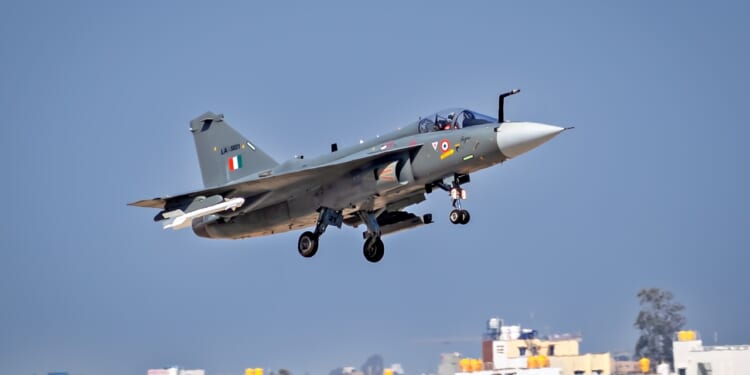The Indian Air Force’s superior rating came about because it was determined to have a more balanced mix of fixed-wing fighters, rotary aircraft, transports, and trainers than the PLAAF.
Estimating a military’s “strength” can be tricky. In 2020, the People’s Republic of China overtook the United States Navy in terms of its total number of warships. However, the US Navy still has greater overall tonnage, nearly four times the number of operational aircraft carriers, and a significantly larger number of guided-missile cruisers and destroyers than the People’s Liberation Army Navy (PLAN). The worry for Washington is that Beijing continues to rapidly modernize its fleet and out-produce the United States in ship construction. Current projections warn that by 2030, the PLAN could be at least 50 percent larger than the US Navy.
Yet one area that America will still retain a significant advantage is in the size of its Air Force, which ranks as the largest in the world. China not only trails the United States, but it was reported this month that the Indian Air Force (IAF) has surpassed the People’s Liberation Army Air Force (PLAAF) in terms of capabilities, if not overall numbers.
According to the newly published World Directory of Modern Military Aircraft, which ranks 103 countries and 129 air services, there were 48,082 total military aircraft in service around the world in 2025. WDMMA ranks the world’s air forces based on a detailed formula that determines the combat effectiveness, modernization, and logistical support, in addition to the total number of aircraft in service.
America Has the Strongest Air Force in the World—and It’s Not Close
Not surprisingly, the United States Armed Forces, which remains the top spender globally on military hardware, has the largest number of total military aircraft. Put into focus, the number is even larger as the combined US Air Force, US Army, US Navy, and US Marine Corps operate 13,052 aircraft. To put that number into perspective, it is larger than the number of aircraft in service with Russia, India, China, South Korea, and Japan—combined.
The US Air Force alone operates 5,004 aircraft, while the US Army operates 4,333 aircraft, the US Navy 2,504 aircraft, and the USMC 1,211 aircraft. The United States military is the largest operator of the fifth-generation F-35 Lightning II Joint Strike Fighter, in service in the Navy, Air Force, and Marine Corps; the Air Force also operates the F-22 Raptor, the world’s best fifth-gen air superiority fighter.
All of those numbers may already seem impressive, but the more important figure is the TruVal Rating, which the WDMMA uses to determine overall capabilities. In addition to the combat effectiveness, it focuses on the attack and defense attributes of the aircraft in service, as well as the domestic aerospace industry capabilities.
The United States Air Force ranked first with a TVR of 242.9, followed by the US Navy, which had a TVR of 142.4. The Russian Aerospace Forces, which operates 3,677 aircraft, ranked third at 114.2, followed by the US Army and US Marine Corps, which had TVRs of 112.6 and 85.3, respectively.
India Passed China in Aerial Strength This Year
In terms of overall aircraft, China was listed as having 5,357 aircraft, with the PLAAF operating 3,733. Supplementing the PLAAF’s strength, the People’s Liberation Army Ground Forces (PLAGF) operates 1,188 aircraft, and the People’s Liberation Army Navy Air Force (PLANAF) operates 436. That is significantly higher than the combined 2,488 aircraft operated by the Indian military, which has 1,716 in service with IAF, 540 with the Indian Army, and 232 operated by the Indian Navy.
Yet even as China has more than double the total number of military aircraft—and the PLAAF is also twice the size of the IAF—New Delhi now maintains an edge over Beijing under the TVR, according to WDMMA.
With its 1,716 aircraft, the IAF’s TVR was 69.4, compared to the PLAAF’s 63.8 TVR.
The IAF’s superior rating came about because it was determined to have a more balanced mix of fixed-wing fighters, rotary aircraft, transports, and trainers than the PLAAF. India operates aircraft supplied by the United States, Russia, France, and other countries, while it is also expanding its domestic capabilities. This could include a joint production deal involving the fifth-generation Russian Sukhoi Su-57 (NATO reporting name “Felon”), which would further increase the IAF’s capabilities.
China’s Air Wing Is Still Very Capable
Beyond the fact that China is the second largest operator of military aircraft after the United States, the PLAAF came on the TVR rankings ahead of the Japanese Air Self Defense Force (JASDF), the Israeli Air Force, the French Air & Space Force, and the UK’s Royal Air Force (RAF).
China is also only the second nation—again after the United States—to develop two fifth-generation fighters. It is also known to be developing a sixth-generation fighter, unofficially designated the J-36.
About the Author: Peter Suciu
Peter Suciu has contributed over 3,200 published pieces to more than four dozen magazines and websites over a 30-year career in journalism. He regularly writes about military hardware, firearms history, cybersecurity, politics, and international affairs. Peter is also a contributing writer for Forbes and Clearance Jobs. He is based in Michigan. You can follow him on Twitter: @PeterSuciu. You can email the author: [email protected].
Image: Shutterstock / Lalam photography.


















